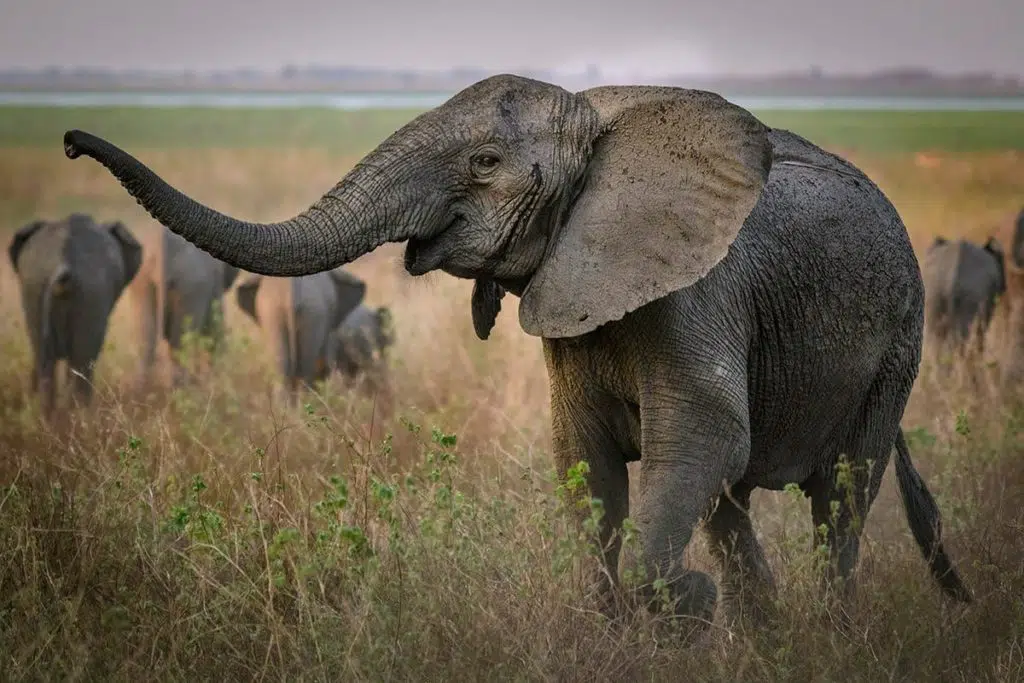
In a completely unforeseen but welcome development as conservationists try to stop the poaching of elephants for their ivory tusks, tuskless female elephants are now evolving in a national park in Mozambique.
However, this otherwise hopeful story doesn’t end there, as the genetic variation that allows them to escape the sights of poachers is lethal when it is passed onto male elephants.
A scourge of elephant populations wherever they roam in the wild, ivory poachers have decimated the numbers of both African and Asian elephants over the decades.
The problem was especially acute in the years of Mozambique’s civil war between 1977 to 1992 in which the gentle giants were killed for their ivory as a way to pay for armaments. Incredibly, the estimated population of African elephants there went from 2,500 individuals down to approximately two hundred in the early 2000s, due to poaching from both sides, according to a story in Smithsonian Magazine.
With one pound of ivory bringing in $1,500 to poachers, and tusks weighing up to 250 pounds, the temptation to take the animals illegally proved too great.
Tuskless female elephants’ progeny give hope for future of species’ survival, but genetic quirk persists
Experts believe that this may well have resulted in the survival of naturally tuskless elephants who have a gene that precludes the formation of tusks. And that might prompt most people to rejoice, believing that the species may finally have the reprieve it needs to rebound.
Now, there are an estimated eight hundred elephants in the sanctuary. Tragically, however, according to a new study published in the journal Science, this specific genetic mutation is lethal to male elephants.
So the lack of these gigantic teeth, used to strip bark from trees, to dig in the ground for water, to lift things out of the way—and yes, to defend themselves against other elephants —will not be the saving grace of the enormous mammals who range the savannah.
There have always been some females in the elephant population that were naturally tuskless due to this genetic anomaly, and they were the ones who survived during the grim years of Mozambique’s civil war.
Noticing this trend, researchers at Gorongosa National Park decided to study the natural prevalence of the condition and see what that could tell them about the survival of the species.
No one affiliated with the park has ever seen a tuskless male elephant, leading them to conjecture that the trait for tusklessness is sex-linked.
According to a report from The New York Times, this could mean that the mutation could even kill the males who inherit it by a genetic quirk. Park researchers say that there were 18.5 percent of tuskless females before the war, and 33 percent of the 91 female elephants after the war were naturally tuskless. Now, half of the female elephants living in the park are tuskless, leading them to believe that the unusual trait has been passed down through females.
When female elephants have one copy of the tuskless mutation, half of their daughters will have tusks, and the others will not. However, if a male elephant has the mutation, half of their male offspring will have tusks, and the other half will die, according to The Times.
“When mothers pass it on, we think the sons likely die early in development, a miscarriage,” Brian Arnold, a Princeton evolutionary biologist and co-author of the study, told the Associated Press.
Researchers found two genes that were responsible for helping build tusks that may be causing the tuskless condition in females, as well as the death of the tuskless males. Nature reports that one of the genes, dubbed “AMELX,” is only located on the X chromosome; the other is called MEP1a. In mammals, these genes direct the development of incisor teeth.
Unfortunately, AMELX is located close to the genes that can kill males if they are not present in the X chromosome; more research is needed as to how these genes work together.
Still, the observation that at least female elephants can survive poaching gives hope to scientists.
Chris Darimont, a conservation expert at the University of Victoria in Canada tells Nature that “they have this very compelling genomic data…This is a wake-up call in terms of coming to grips with humans as a dominant evolutionary force on the planet.”
See all the latest news from Greece and the world at Greekreporter.com. Contact our newsroom to report an update or send your story, photos and videos. Follow GR on Google News and subscribe here to our daily email!



